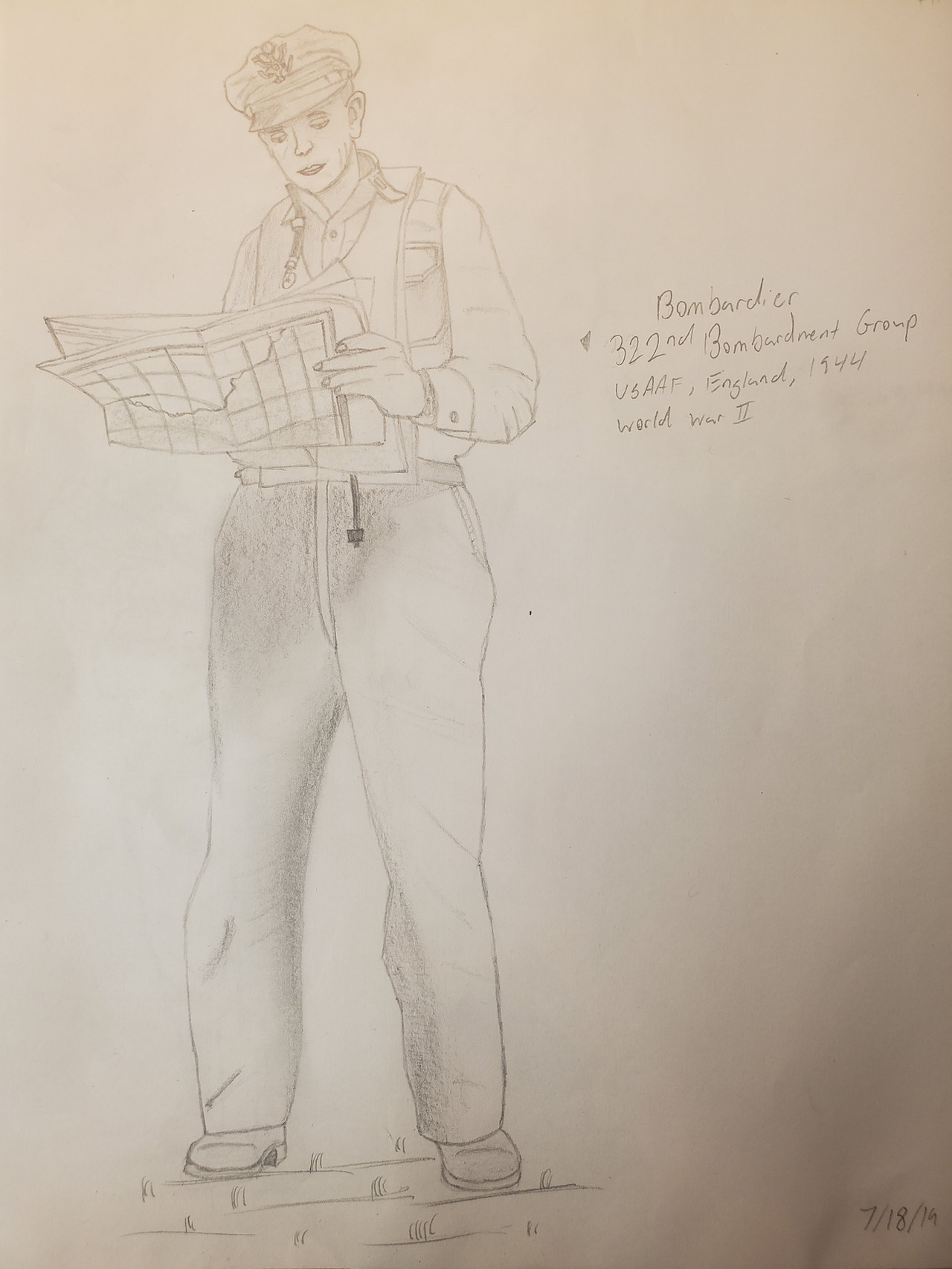HOME | DD
 WC2020 — U.S.A.A.F Officer, WW2
WC2020 — U.S.A.A.F Officer, WW2

#usaf #ww2 #world_war_2
Published: 2024-01-28 17:42:46 +0000 UTC; Views: 405; Favourites: 0; Downloads: 0
Redirect to original
Description
Bombardier, 332nd Bombardment GroupU.S.A.A.F, England, 1944
World War II
This bombardier studies a map of his target before takeoff from one of the many U.S airbases in the U.K.
The U.S.A.A.F (United States Army Airforce) was the predecessor to the U.S Airforce, as it wasn't an independent branch until 1947. Once the U.S entered the war in 1941, they needed a place to station their aircraft close enough so they could reach mainland Europe, thus they built bases in England.
The crewman seen here flies in Boeing B-17 Flying Fortress heavy bomber. Its four engines gave this aircraft a top speed of 250 mph (402 km/h) and a range of around 1,020 miles (1,640 km). The bombardier’s job was to scan the area and find the target to drop the 2,000 lbs. of bombs on. The name “Flying Fortress” is due to the plane being armed with thirteen 50 caliber machine guns. These guns were placed in the top, bottom, back, front, and both sides of the aircraft which created a bubble like defense against enemy fighters. While well armed, B-17s proved to not be as invincible as they were thought to be. Enemy anti-aircraft guns and fighters proved to be extremely devastating to the point that it was actually statistically safer to be a soldier on the ground instead of in the air. The average crew member had only a 25% chance of surviving all of his required 25 missions.
Under the yellow life jacket, the crewman wears a khaki shirt, and the rest of his uniform consists of khaki dress trousers, russet shoes, and the standard officer peaked cap. On his shirt collar is a single silver bar to denote his rank of 1st Lieutenant. Aviation personal used the same rank structure as the Army.

























